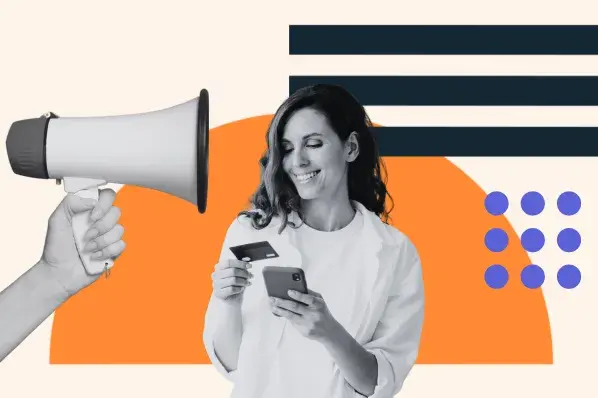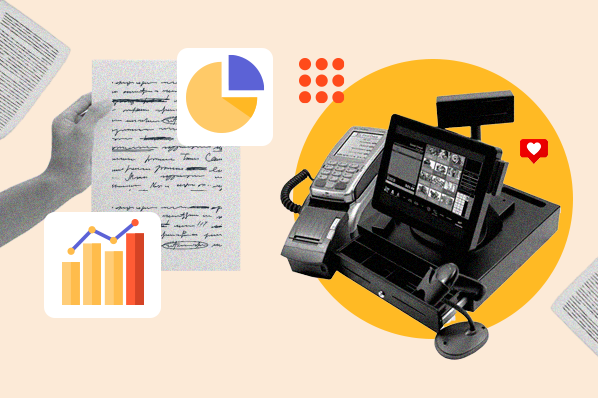Over the years, I’ve been fortunate to witness the evolution of B2B customer acquisition strategies, from traditional methods to the rise of digital channels and personalized approaches. I’ve worked closely with talented marketers, observed what works and what doesn’t, and gained a deep understanding of the complexities and nuances involved.
I’m excited to share those insights with you here, combining my own observations with expert advice to provide a comprehensive guide to B2B customer acquisition.
Table of Contents
- What Is B2B Customer Acquisition?
- B2B vs. B2C Customer Acquisition
- The B2B Customer Acquisition Process
- B2B Customer Acquisition Strategies
- Common Pitfalls in B2B Customer Acquisition
What Is B2B Customer Acquisition?
In essence, B2B customer acquisition is the process of attracting, engaging, and converting other businesses into paying customers for your products or services. This involves identifying your target audience, understanding their needs and pain points, and crafting a compelling value proposition that resonates with them.
From there, companies utilize a mix of inbound and outbound marketing strategies, from personalized email campaigns to content marketing, to engage these businesses at various touchpoints.
This combination helps guide businesses through the decision-making process, ultimately leading to conversions.
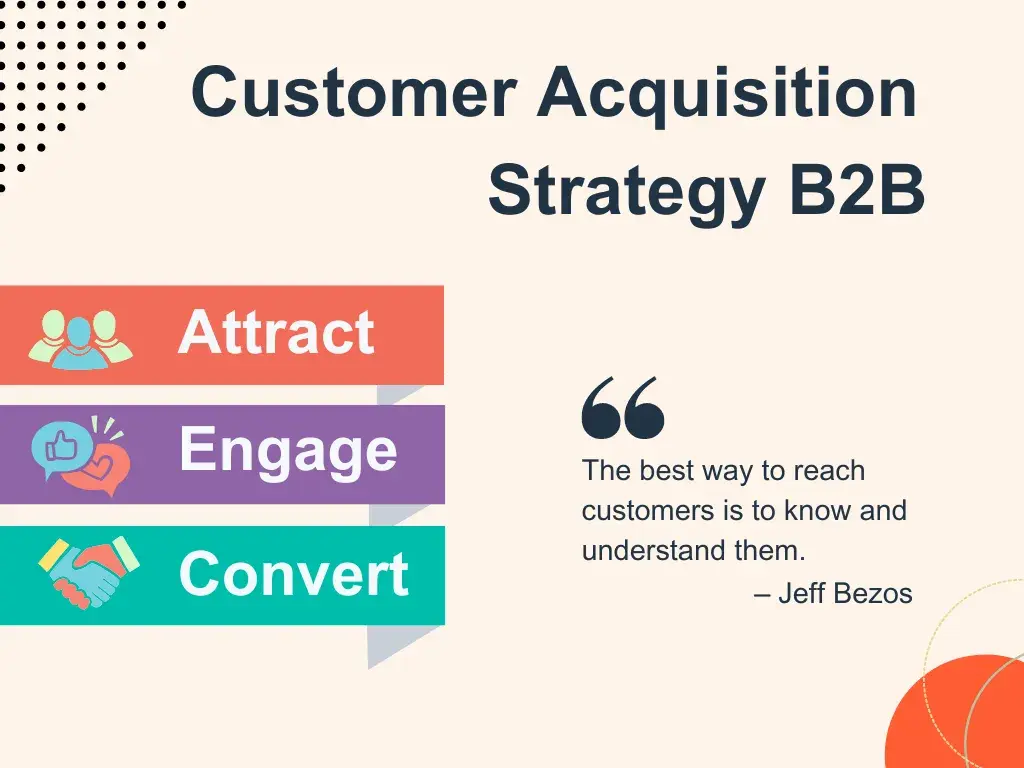
B2B vs. B2C Customer Acquisition
While both B2B and B2C customer acquisition aim to gain customers, there are some key distinctions. B2B transactions often involve higher price points, longer sales cycles, and multiple decision-makers. Building trust and fostering long-term relationships are important in the B2B world, where purchases are often driven by logic, ROI, and specific business needs rather than impulse or emotion.
Siva Devaki, co-CEO of MassMailer, says, “Sales is not about selling anymore, but about building trust and educating.” We have a lot to learn from customers but should also have a lot to teach about our products and what we can offer.
One of the unique challenges in B2B acquisition is navigating complex organizational structures and understanding the different roles involved in the decision-making process. You might need to tailor your messaging and approach to appeal to various stakeholders, from end-users to C-suite executives.
Understanding the differences between B2B and B2C customer acquisition is critical for tailoring your approach.
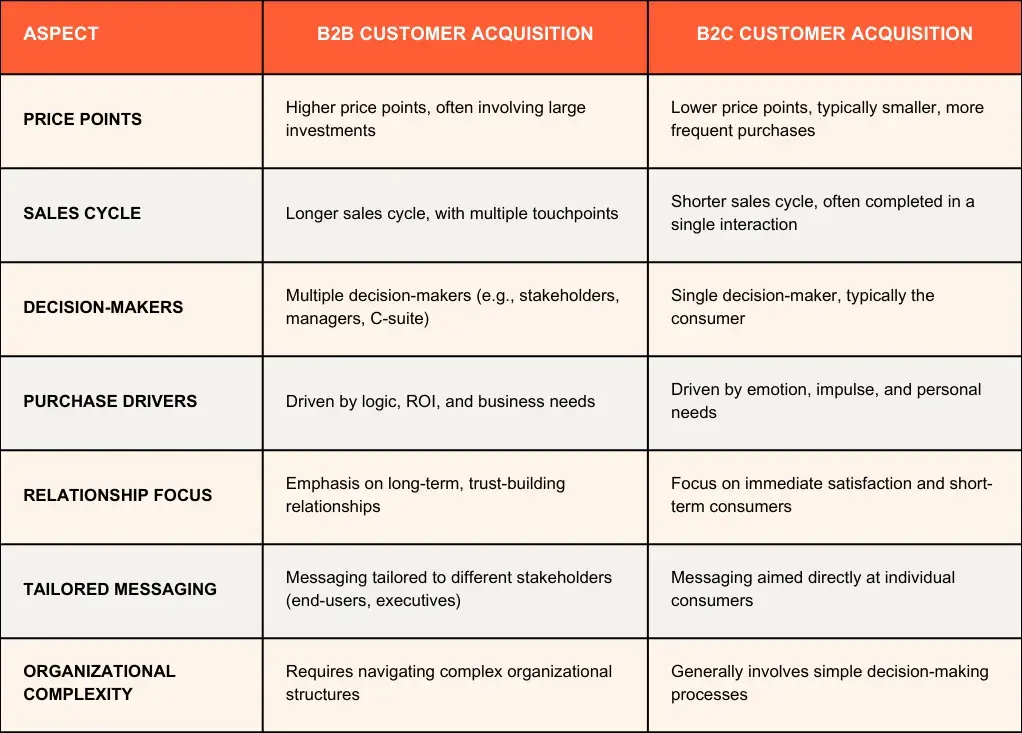
Now that we’ve covered these key distinctions, let’s dive deeper into the B2B customer acquisition process and explore the specific stages involved in attracting and converting business clients.
The B2B Customer Acquisition Process
The B2B customer acquisition process typically follows several core stages that guide businesses from identifying potential customers to closing deals and nurturing long-term relationships. While terminology can vary, the core concepts remain the same.
Here’s a breakdown of the process.
1. Targeting and Identification
- The first step is identifying and defining your ideal customer profile (ICP) and target audience. This involves researching potential leads that fit the criteria based on factors like industry, company size, and pain points.
- Tools like CRM software and data analytics are often used to track and filter prospects based on these characteristics.
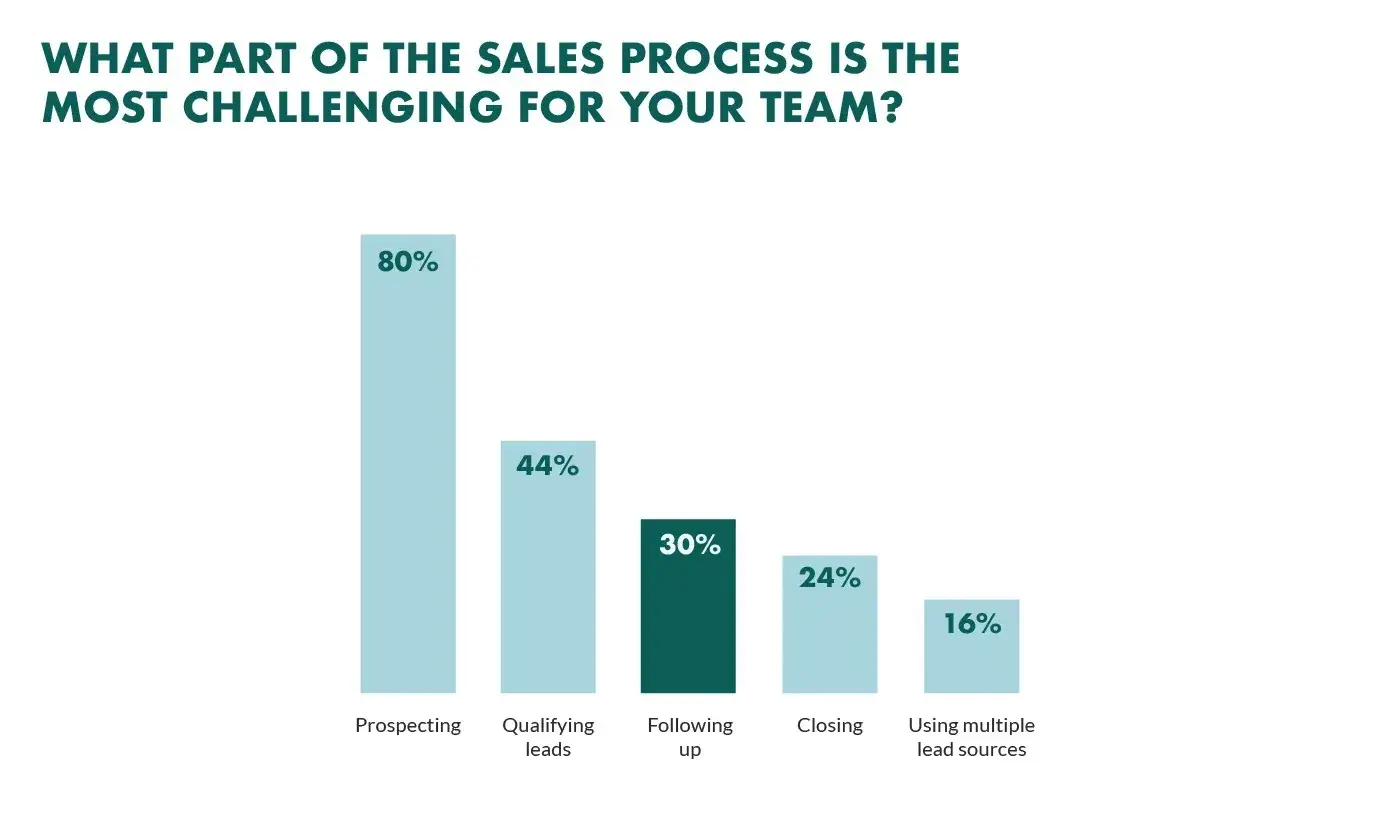
2. Lead Generation
- Once you’ve identified your target audience, the next step is to generate interest. According to research from marketing measurement and attribution firm Ruler Analytics, 91% of marketers say that lead generation is their most important goal. It often involves inbound marketing (content marketing, SEO, webinars) or outbound marketing efforts (cold calling, direct emails).
- Effective lead generation strategies rely on value-driven outreach, often showcasing how your solution addresses specific business challenges.
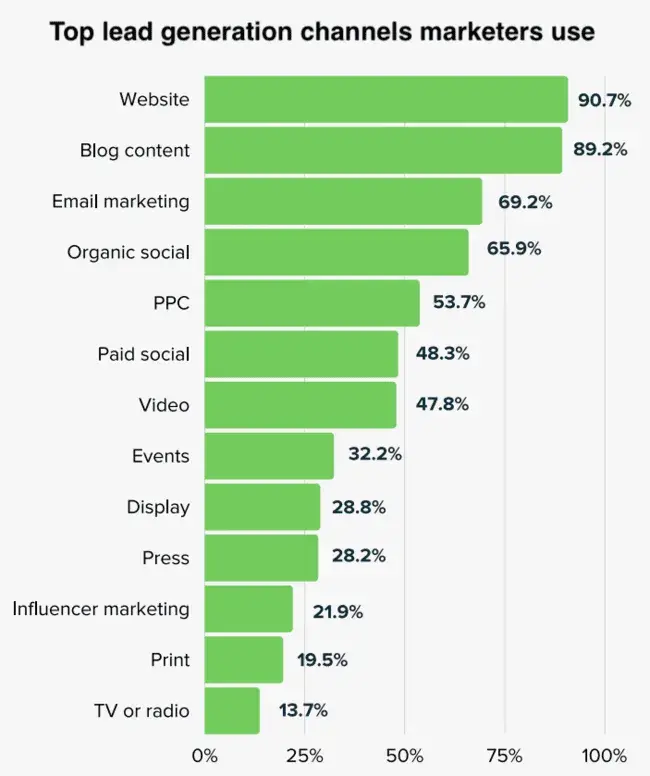
3. Lead Nurturing
- B2B sales cycles tend to be longer, requiring ongoing engagement to build trust and keep the potential customer “warm.” This process typically includes personalized content, follow-up emails, and targeted campaigns to keep prospects engaged.
- This is where email marketing and CRM tools help to track these interactions over time, enabling you to provide the resources the customer needs at the right times throughout the journey.
4. Qualification
- Not all leads are ready to convert. Qualification involves filtering out unqualified leads by assessing whether they meet your company’s criteria in terms of budget, authority, need, and timeline (commonly referred to as BANT).
- Marketing teams often hand off qualified leads to sales teams, who then perform more in-depth vetting to determine if the lead is a viable opportunity.
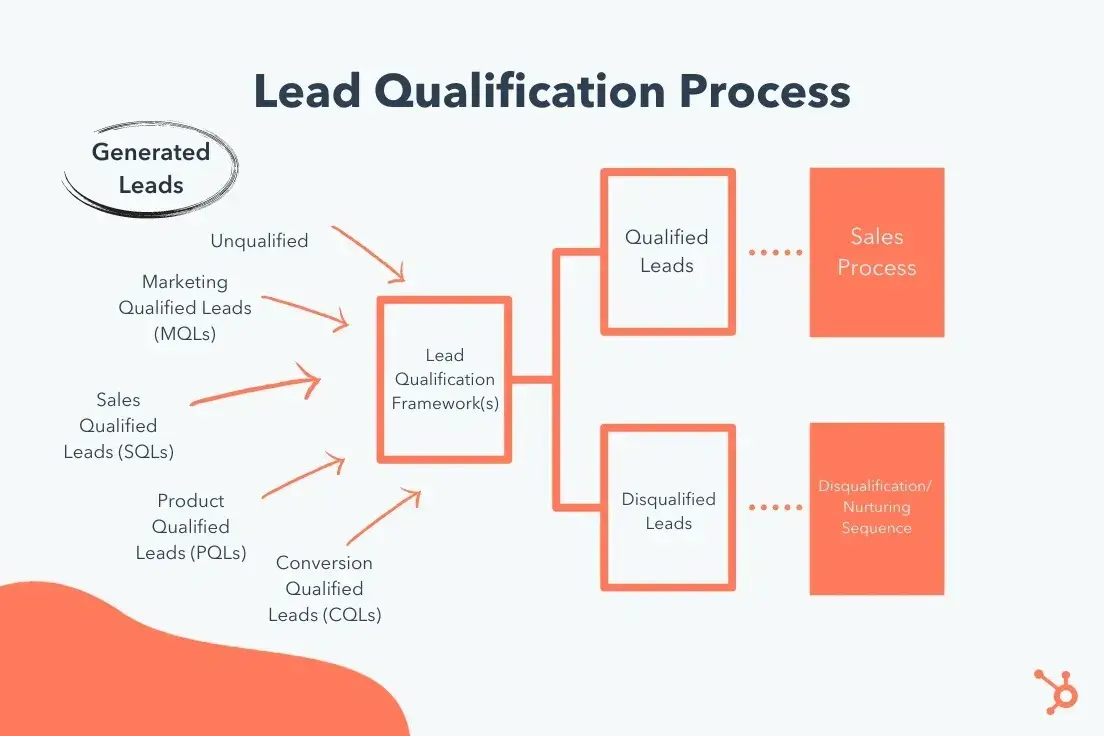
5. Conversion
- Once a lead has been qualified, you’ll begin the process of demonstrating the value of your product or service through product demos, proposals, or free trials. This is where sales and marketing collaborate closely to showcase ROI and address specific customer pain points.
- Buyers are more educated than ever and often want to test-drive products or services before committing, ensuring they truly address their needs and pain points. According to TrustRadius, 74% of active buyers say that trials are the most influential resource during their research in the purchasing process.
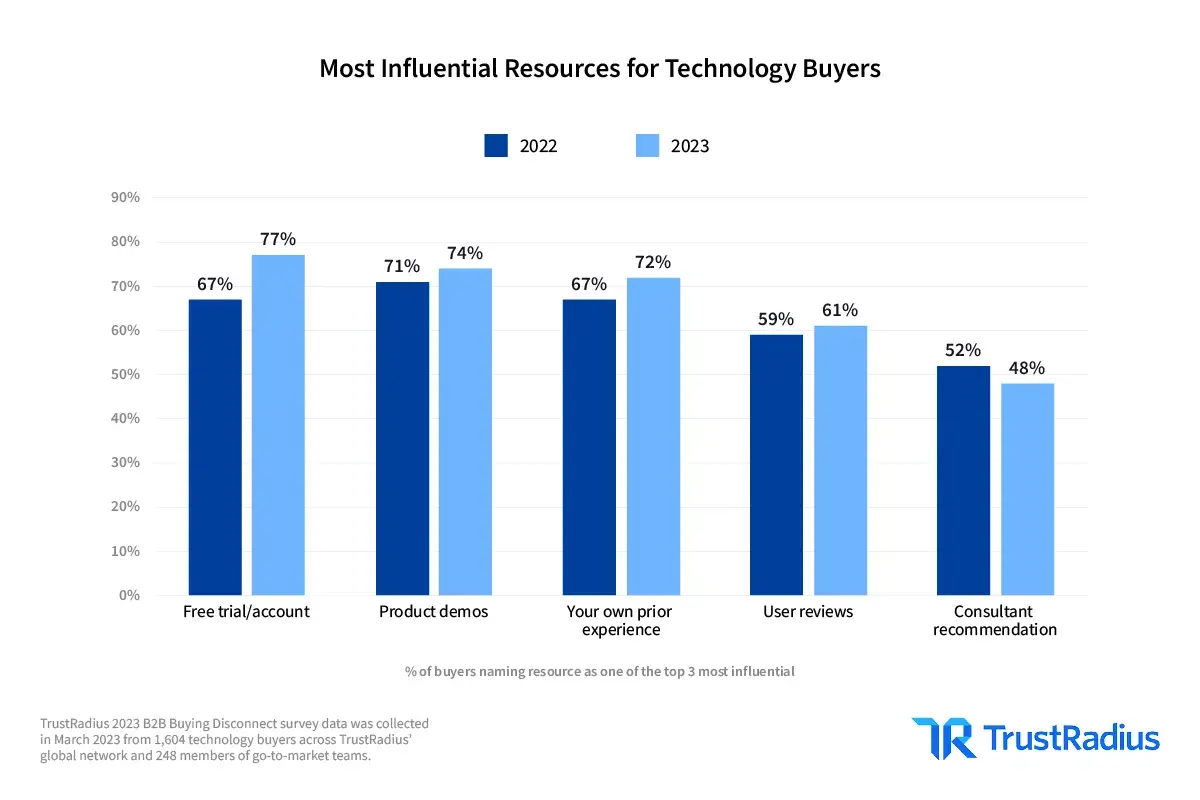
6. Closing the Deal
- Once you’ve ironed out the details, tackled any lingering concerns, and reached a mutual agreement, it’s time to close the deal. This is the moment your prospect becomes an official customer.
- Make sure to establish a robust post-sale support strategy to continue fostering a strong relationship and promoting the likelihood of a future renewal. Don’t underestimate the power of a well-timed follow-up. A value-reinforcing message can show the customer they made the right purchasing decision.
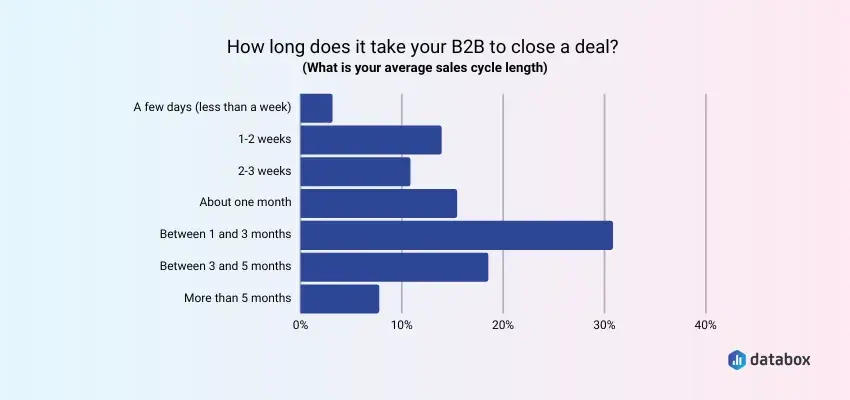
7. Post-Sale and Retention
- After the sale, the focus shifts to onboarding, training, and customer success. Nurturing the relationship post-sale is crucial for retaining customers and ensuring satisfaction. Clearly outline resources and points of contact for the customer to stay informed at all times.
- This stage can also include upselling and cross-selling opportunities as part of customer retention strategies. Often times your customers’ wants and needs will change, which is an opportunity to showcase your other products and services. The goal is to increase your value-add and make your products and services more sticky within the customer’s business.
Pro tip: To visualize and optimize your customer journey, consider using customer journey map templates. These templates can help you understand the different touchpoints and interactions that influence customer decisions, allowing you to refine your acquisition strategy.
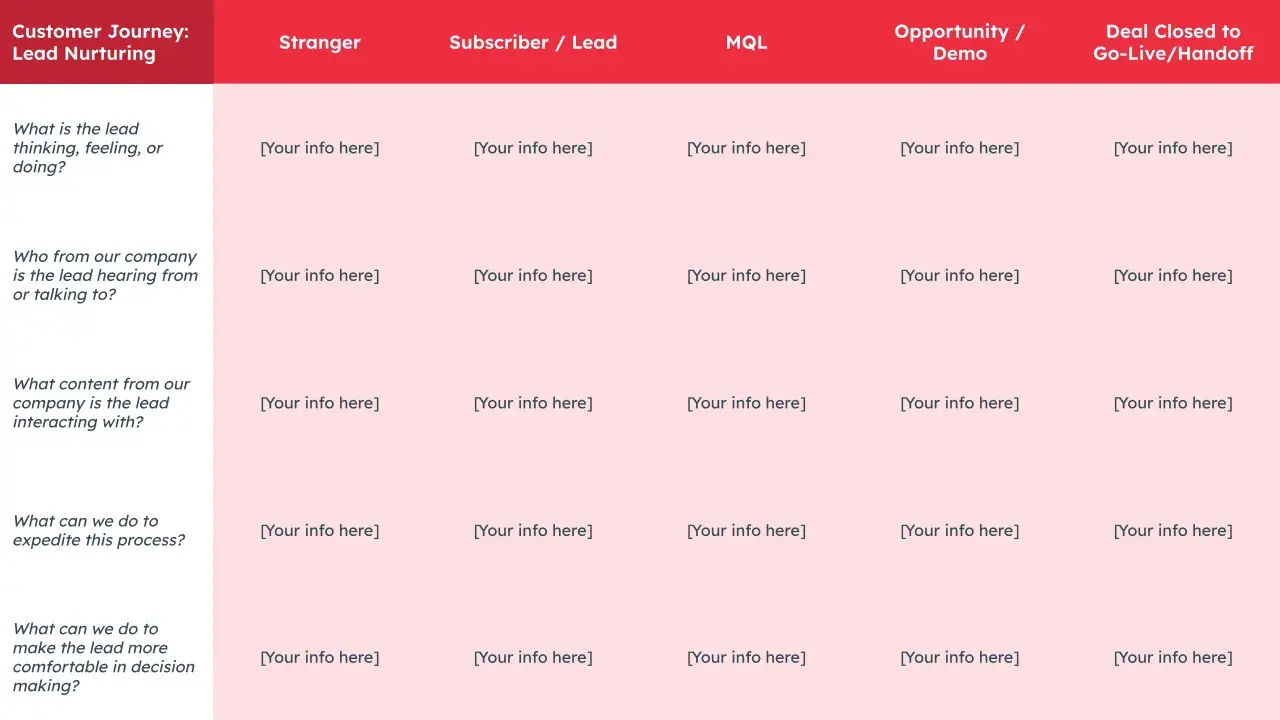
B2B Customer Acquisition Strategies
Now, let’s explore some of the most effective B2B customer acquisition strategies, drawing insights from experts and my own experience.
1. Targeted Content Marketing
Creating valuable and informative content, such as blog posts, white papers, ebooks, and webinars, can attract and engage potential customers. It’s essential for B2B customer acquisition because it does more than just raise awareness. It creates meaningful engagement by addressing the specific needs of your target audience.
As Neil Patel of NP Digital points out, “They’re not interested in fluff or generic content. They want in-depth, technical insights that tackle their specific pain points and challenges.” This is the type of content that drives businesses to engage further with your brand, ultimately pushing them closer to making a purchase decision.

2. Search Engine Optimization
In the B2B space, SEO is used to attract decision-makers and stakeholders who are actively searching for solutions to their business problems. By targeting specific, high-value keywords with low search volumes, B2B companies can position themselves in front of the right audience at the right time.
The HubSpot State of Marketing Report points out that 29% of marketers list SEO as a top trend they leverage. Adam Audette, SEO consultant and previous SVP of Global SEO at Merkle, aptly states, “Today it’s not about get the traffic, it’s about get the targeted and relevant traffic.”
The power of SEO in B2B customer acquisition strategy lies in its ability to provide increased organic visibility, targeted audience reach, and enhanced credibility. By optimizing website content for relevant keywords and creating high-quality, informative content, B2B companies can establish themselves as thought leaders in their industry.
This not only helps in attracting potential customers but also nurturing them through the typically longer B2B sales cycle.
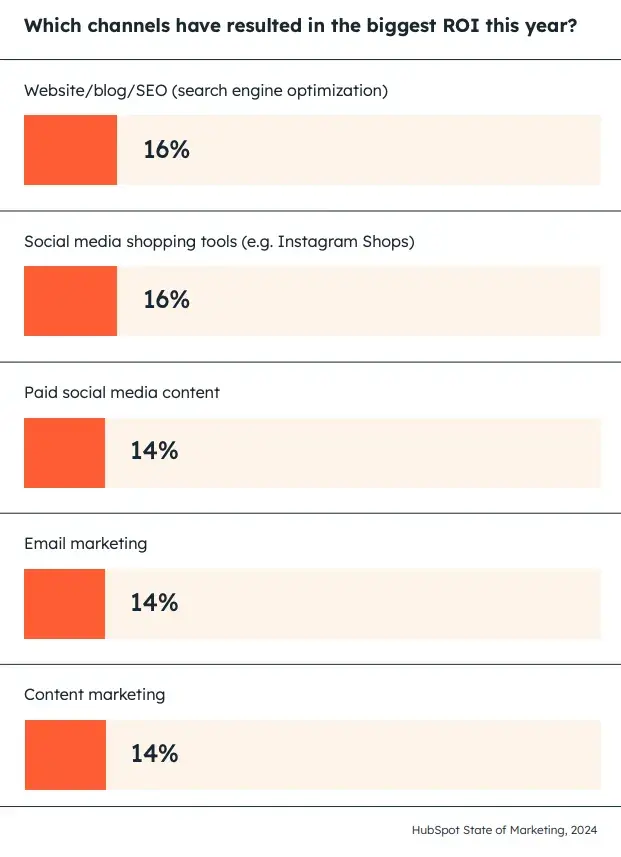
3. Email Marketing
Email marketing remains a cornerstone of effective B2B customer acquisition strategies, offering unique opportunities for personalization and direct communication.
As Ann Handley, chief content officer at MarketingProfs, states, “Email marketing allows you to personalize your communication and deliver valuable content directly to your audience’s inbox.”
I know firsthand how this approach can significantly impact engagement rates and lead nurturing efforts through my experiences building customer loyalty programs. In the B2B space, by segmenting email lists based on factors such as industry, job role, or stage in the buying process, businesses can tailor their messaging to address specific pain points and offer relevant solutions, helping to move prospects through the sales funnel more effectively. In fact, segmented emails drive 30% more opens and 50% more clickthroughs than unsegmented ones, according to the HubSpot State of Marketing Report.
To maximize the impact of your email campaigns, focus on delivering value rather than just promoting your products or services. Unfortunately, a study by Edison Mail found that 59% of Americans say most emails they receive are not useful to them.
By focusing on value and relevance, you can improve open and click-through rates while also cultivating trust and loyalty amongst your audience. This will ultimately drive conversions and customer retention.
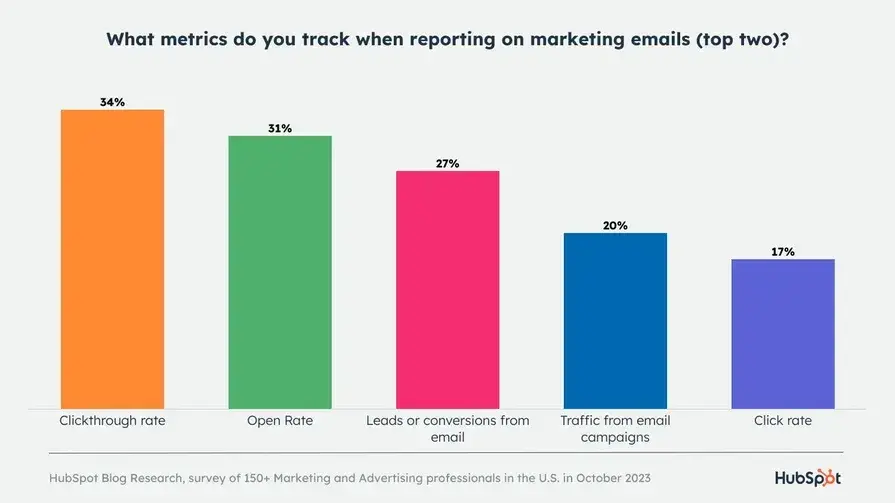
4. Leveraging LinkedIn
LinkedIn has emerged as a powerful platform for B2B customer acquisition, offering a different type of approach for connecting with decision-makers and industry professionals. I really enjoy this approach as it brings an opportunity for hyper-personalization.
In fact, it’s so effective that, according to Analyzify, 84% of B2B marketers used LinkedIn as part of their marketing efforts. By utlizing their advanced targeting options, businesses can ensure their content and ads are seen by the most relevant audience, increasing the likelihood of generating high-quality leads.
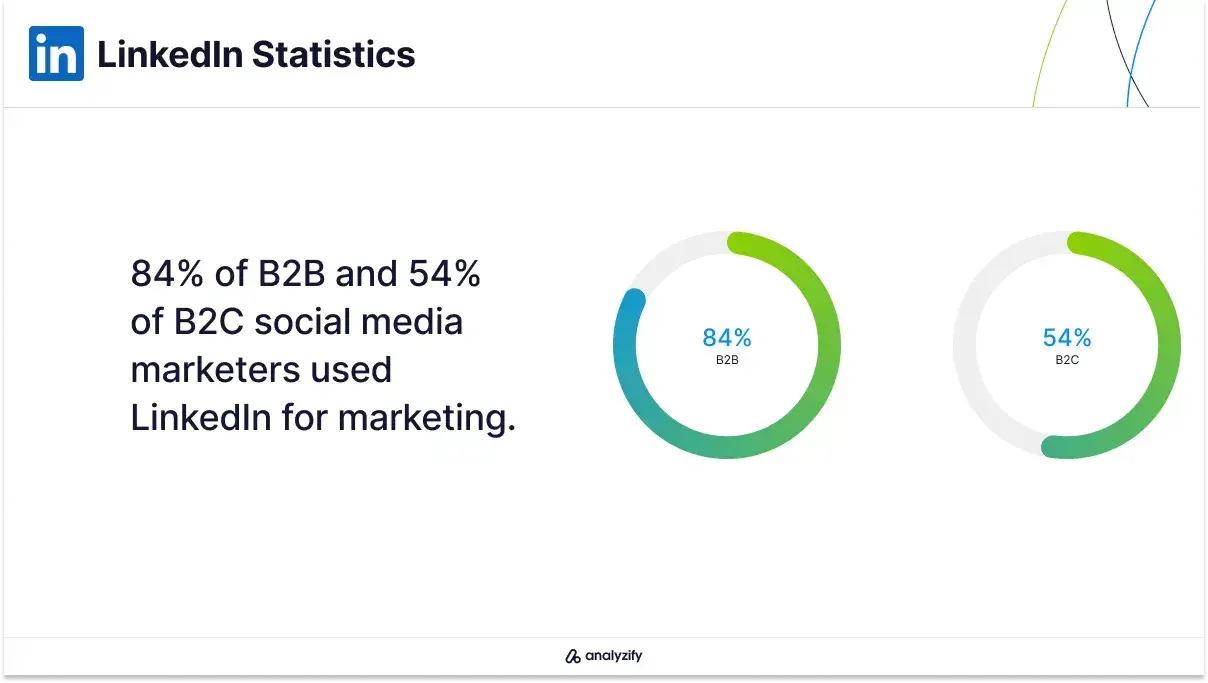
LinkedIn also brings the power of InMail, which allows you to leverage their more than 900 million members across 200 countries. There’s a lot of B2B opportunity in that. According to data by LinkedIn Business Solutions, InMails have a 10-25% success rate when it comes to soliciting a response from potential clients, 300% higher than emails with the exact same content.
My previous colleague and senior account executive at Recurly, Blake Owen, highlights the importance of a targeted approach in social selling by stating: “Knowing your ideal customer profile is really important. By deeply understanding who you provide the most meaningful value to, you can tailor your offerings to meeting their specific needs, ultimately enhancing your marketing approach and ensuring success.”

Owen goes on to highlight that, “There is a trend of hyper-focus on personalization in the direct-to-consumer space right now. My experience has shown that the same effectiveness can be found for acquiring B2B customers in your respective field.”
He refers to the concept of the Sniper Theory in B2B customer acquisition strategy. “I apply the Sniper Theory which emphasizes the importance of precision outreach. Just like a sniper evaluates wind speed, humidity, and distance before taking a shot, I thoroughly research prospects by reviewing their LinkedIn profiles, press releases, and investor relations reports. This preparation ensures that my outreach has the highest chance of resonating with them and converting leads into customers.”
Owen’s approach underscores the necessity of tailoring your approach to each prospect.
Pro tip: Leverage HubSpot’s integration with LinkedIn Sales Navigator to access valuable LinkedIn insights directly from your HubSpot contact and company records. You can also send InMails straight from HubSpot, streamlining your outreach efforts.
5. Account-Based Marketing (ABM)
Important in B2B customer acquisition, particularly when targeting high-value accounts, this strategy allows you to create highly personalized campaigns that address the specific needs and challenges of each account, ensuring a more relevant and impactful approach.
A recent ABM Benchmark report by Momentum ITSMA shows that 91% of organizations have some kind of ABM program, and 81% claim to see a higher ROI in comparison to their traditional marketing efforts.
Jon Miller, previous chief marketing officer at Demandbase, likes to compare typical demand generation to fishing with a net, and ABM is like fishing with a spear. He says, “Account-based marketing is a strategic approach that coordinates personalized marketing and sales efforts to open doors and deepen engagement at specific accounts.”
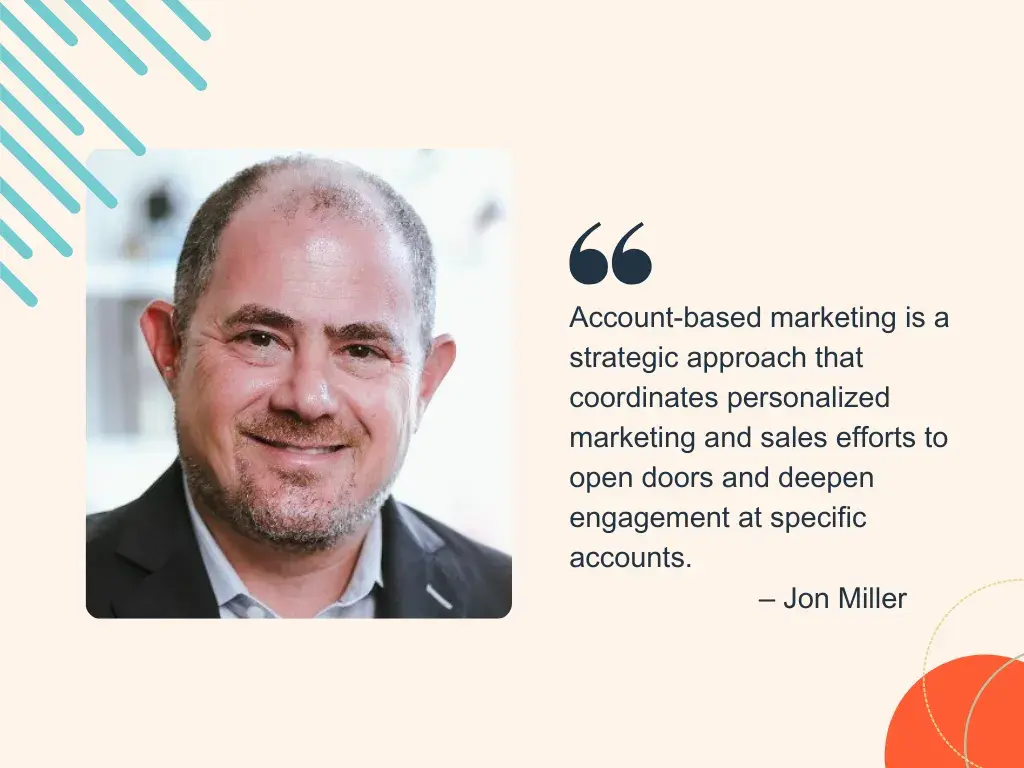
In my experience, the power of ABM lies in its ability to align sales and marketing teams around a common goal. Instead of casting a wide net and hoping for the best, ABM allows you to focus your resources on the accounts most likely to convert and generate significant revenue. It not only improves efficiency but tends to yield better results.
6. Paid Advertising
This is another highly targeted form of reaching customers by using precision tools to put your message in front of the right audience, at the right time, with the right intent. Given the lengthier sales cycles and higher-value transactions typical in B2B, every dollar spent needs to go toward generating qualified leads who are likely to convert.
Based on my experience and what I’ve seen with B2B SaaS brands, leveraging platforms like Google Ads, LinkedIn, and general display advertising on industry-specific websites can create impactful campaigns when executed correctly.
The Content Marketing Institute did a survey and found that paid advertising is one of the areas where B2B marketers see organizations’ investments increasing in 2025.
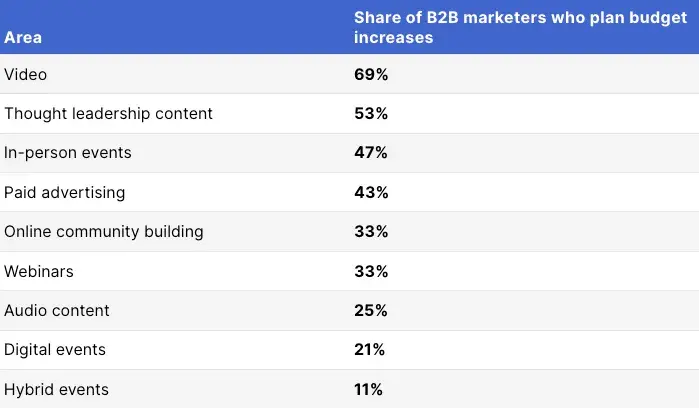
Some general best practices for B2B paid advertising include:
- Narrowing your audience.
- Testing and optimizing your campaigns.
- Retargeting for longer sales cycles.
B2B paid advertising is less about volume and more about precision, ensuring that every impression and click moves you closer to a meaningful conversation with potential customers.
7. Strategic Partnerships
Strategic partnerships are an often overlooked yet highly effective method for acquiring B2B customers. By partnering with other companies, you can tap into their audience and leverage the trust they’ve built, effectively broadening your reach without starting from scratch.
This approach can take many forms, from co-marketing campaigns to joint product offerings or referral programs. What makes it particularly valuable is that you’re aligning yourself with brands that share your target market but aren’t direct competitors, allowing you to expand your influence in a way that benefits both parties.
A prime example of strategic partnerships is leveraging influencer partnerships in B2B. While we typically think of influencers as Instagram or TikTok personalities, in the B2B world, influencers are thought leaders, industry experts, or companies that command respect in your niche. Working with these key players can enhance your credibility and extend your reach to a highly relevant audience.
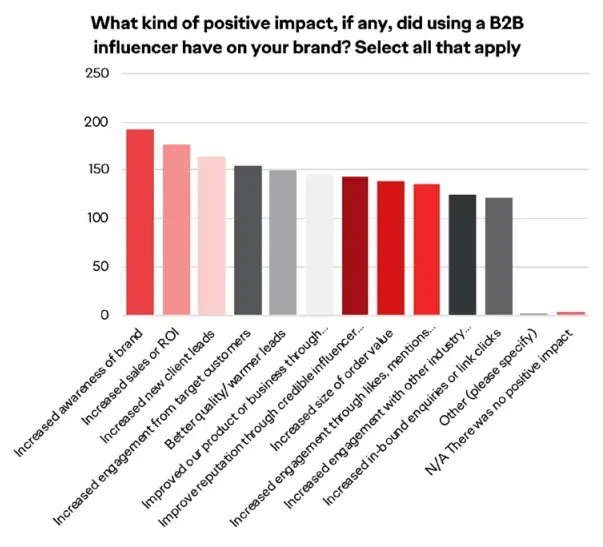
According to a global study by Ogilvy, an NYC-based marketing and advertising agency, 93% of CMOs are planning to increase their usage of influencers in some form in the upcoming years. Some of their feedback from interviews revealed that this kind of marketing enables brands to reach new audiences in new ways.
The findings go on to point out that 75% of surveyed B2B marketers were already utilizing influencers. Below you can see at what stage B2B influencers made the most impact during the customer journey.
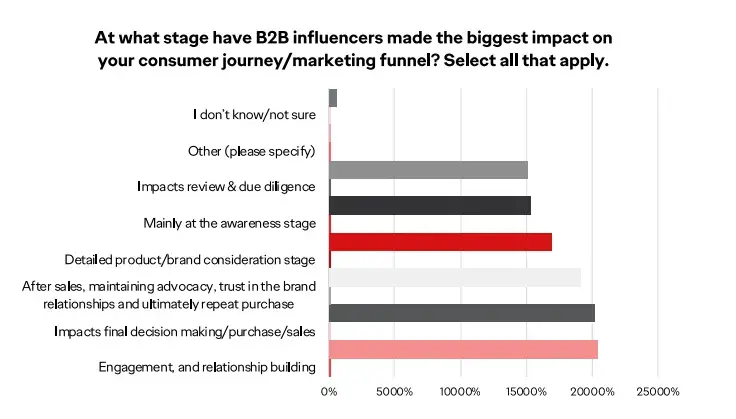
By connecting with trusted figures in your industry, you can gain access to a wider audience and strengthen your position as a thought leader in the space.
8. Networking at Industry Events
This is one of the most time-tested strategies for building relationships and generating B2B leads. In an increasingly digital world, face-to-face interactions still hold significant weight, especially when it comes to high-value deals.
Whether you’re attending conferences, trade shows, or niche vertical events, these gatherings are ideal for meeting decision-makers, exchanging ideas, and nurturing long-term relationships. There’s something about a handshake, a live conversation, or a shared experience that can’t really be replicated through digital means. Let’s admit, it’s also nice to get out of the office every once in a while.
For me, industry events have always been pivotal in connecting with other professionals in the SaaS and tech landscape. I like that at conferences, I’m able to read people’s body language, ask on-the-spot questions, and create a more personal connection than I would through email or LinkedIn alone.
As Owen explains, “I’ve had a ton of success building relationships through sponsorship of industry events in niche verticals and leveraging referrals. The key here is not just showing up, but being intentional. Sponsoring an event or speaking on a panel can position you as an authority, giving you an edge over competitors who are simply attending.”
While Q1 of 2024 saw the majority of marketers struggling with declining or flat event budgets, a recent survey by Forrester found that 92% of respondents plan to improve their post-event attendee follow-up this year. 77% are going even further and building a year-round attendee engagement calendar.
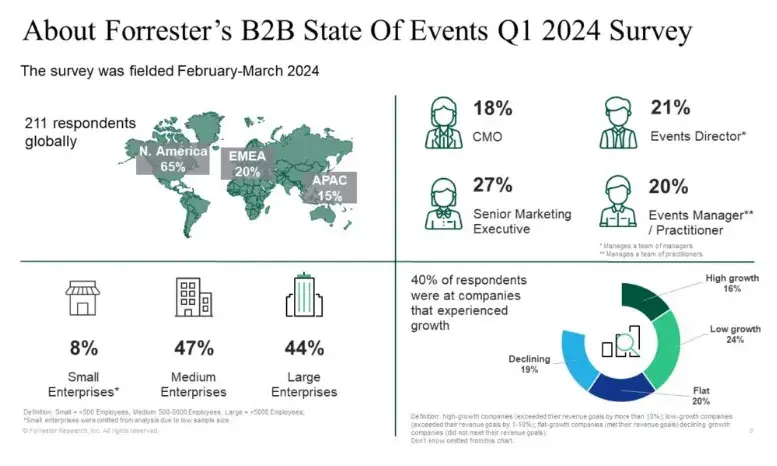
While digital strategies are essential, in-person networking still carries a weight in B2B that should not be underestimated.
By attending industry events, building strong connections, and leveraging those connections post-event, you can significantly enhance your B2B customer acquisition strategy.
9. Referral Marketing
Referral marketing is one of the more effective strategies for B2B customer acquisition, offering a high potential for quality leads. Similar to strategic partnerships, it taps into the trust that exists within professional networks, allowing businesses to leverage existing relationships to expand their customer base. In my years working at fast-paced startups in Silicon Valley, I’ve seen how referrals can open doors that traditional cold outreach simply can’t. The quality of leads from referrals tends to be higher, because prospects come to you with a certain level of pre-established trust.
According to the 2024 Gitnux Global SaaS report, the average SaaS company experiences a 20% increase in customer retention after implementing a referral program.
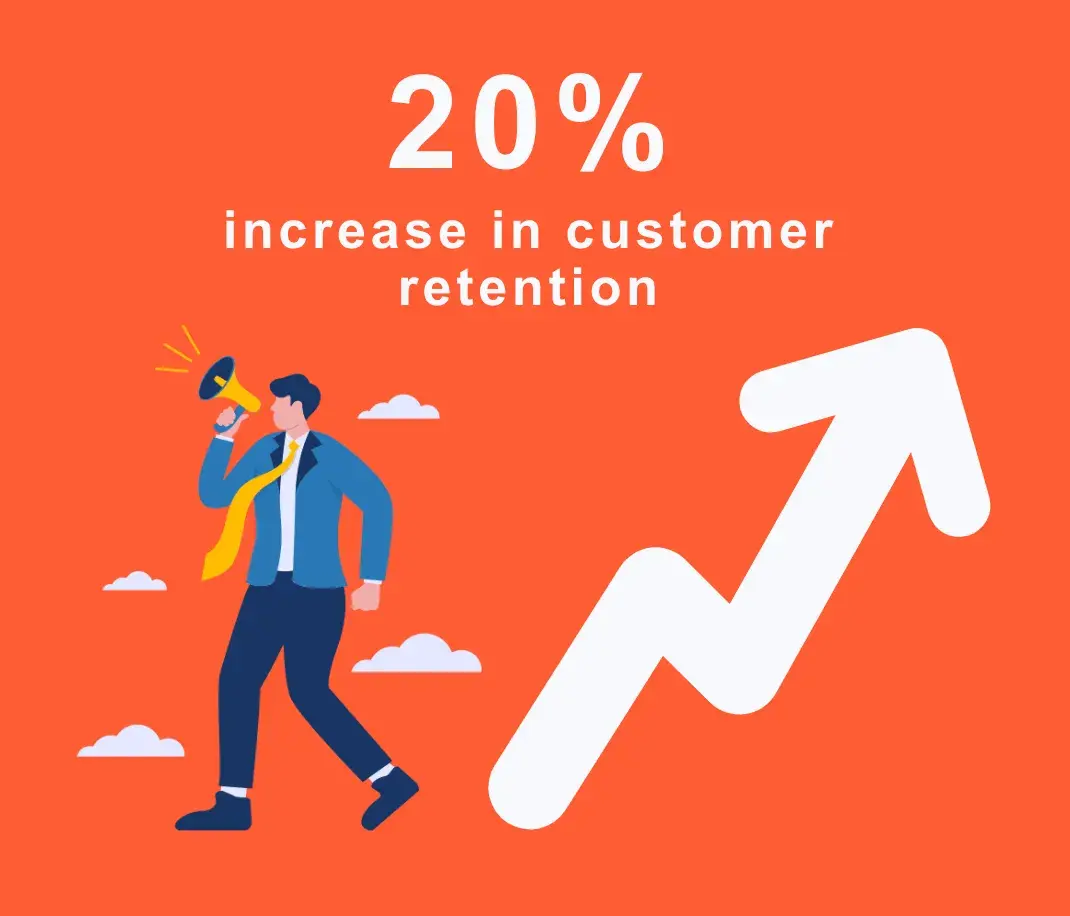
To make the most of referrals in B2B, ensure your program is easy to understand, rewards both parties, and is actively promoted across multiple touchpoints. It’s also important to follow up on referrals promptly to keep the momentum going.
By creating a seamless experience for your advocates, you nurture loyalty while driving high-quality leads into your sales funnel.
Common Pitfalls in B2B Customer Acquisition
There are several common pitfalls that can undermine the effectiveness of your B2B customer acquisition strategy. Let’s review some of them below so that you can avoid these mistakes in your business.
1. Lack of Clear Target Audience
Failing to define your ICP can lead to ineffective marketing campaigns and wasted resources.
As Owen points out, “One common challenge or pitfall is not knowing your ICP. For whom do you provide the most clear and meaningful value?”
He emphasizes the importance of focusing on a specific target market and tailoring your offerings to meet their unique needs. “That focus then dictates how you go to market with content, thought leadership, product development, pitch decks, demo flows, and the development of repeatable plays proven to deliver real value.”
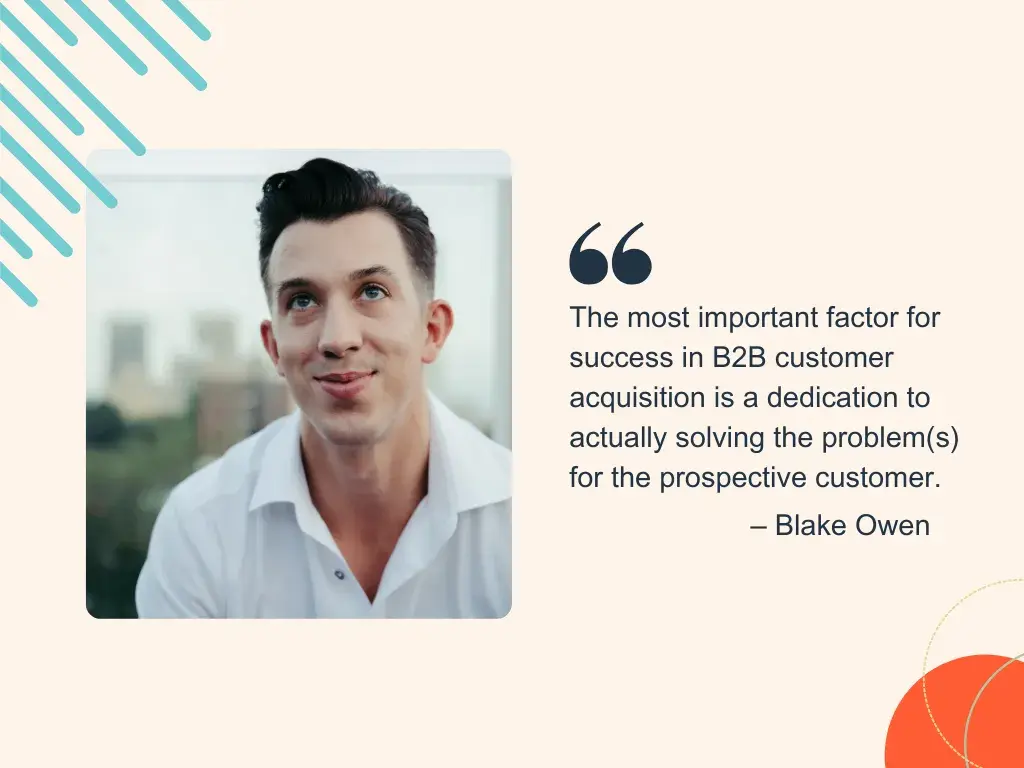
2. Inconsistent Messaging
Whether it’s on your website, email campaigns, or social media platforms, sending mixed messages confuses your audience and weakens your brand’s credibility. Consistency builds trust, and without it, your efforts can fall flat.
To mitigate this, ensure that your messaging is cohesive across all channels and speaks directly to your ICP. This alignment across touchpoints helps create a seamless journey for your prospects and reinforces the value you bring at every stage of their engagement.
3. Neglecting Lead Nurturing
Generating leads is just the first step in the customer acquisition journey. Without an effective nurturing strategy, those leads may go cold.
Owen says that in his experience, “It’s about nurturing those leads through each stage of the buyer’s journey. By providing relevant, valuable content and touchpoints tailored to their needs, you guide them from awareness to consideration to decision. Lead nurturing is the bridge that turns initial interest into lasting customer relationships.”

Some general best practices for B2B lead nurturing include:
- Personalization. Tailor content and messaging based on lead behavior, preferences, and stage in the buyer’s journey. According to the 2024 HubSpot State of Marketing report, 96% of marketers surveyed say personalization leads to repeat business, and 94% say it increases sales.
- Timely Follow-Ups. Respond to lead inquiries promptly, but don’t bombard them with messages. According to a study by Constant Contact, 69% of leads say they unsubscribe from content because they’re getting too many emails from a business.
- Content Diversity. Offer a mix of content types (e.g., emails, blogs, webinars, whitepapers) to cater to different learning preferences. Not extremely surprising, but 55% of B2B marketers surveyed by the Content Marketing Institute cited creating content that prompts a desired action as one of their largest challenges in content marketing.
- Lead Scoring. Implement a system to prioritize leads based on their engagement and fit. You can learn more about lead scoring in the HubSpot Lead Scoring 101 blog post.
Pro tip: Prioritize leads with HubSpot’s Predictive Lead Scoring software. Close more deals with data-driven lead scoring. Manually consolidating, analyzing, and prioritizing leads can deplete your sales team’s time and bandwidth. With predictive lead scoring software, you can automate that process, allowing your team to focus on what they do best – selling.
4. Ignoring Data and Analytics
When you’re considering the role of data and analytics, it’s important to use insights to refine and optimize your customer acquisition strategy. Relying solely on gut instinct or anecdotal success stories can limit your growth. I’ve always used data as a compass to measure progress, identify areas for improvement, and continuously optimize strategies.
Tracking KPIs like conversion rates, cost per lead, customer acquisition costs, and customer lifetime value helps you pinpoint what’s working, and what’s not. With this type of data in hand, you can make informed decisions that drive real business results.
5. Overlooking Customer Retention
It’s critical not to overlook your existing customers.
While acquiring new customers often feels like the primary goal, retaining those you’ve already won over is just as important. We all know acquiring new customers costs more than retaining them — five times as much, according to data from Review42. High churn rates not only damage revenue but also stunt long-term growth potential.
Customer retention is also not just about preventing churn. It provides opportunities for upselling, cross-selling, and generating referrals. By integrating these efforts into your acquisition process, you create a holistic approach that brings in new business but also maximizes the customer lifetime value.
6. Failing to Enable the Front Lines
Expert insight from Owen highlights the crucial role of talent development in successful B2B customer acquisition: “Another notable challenge businesses face is with talent development. It’s critical to arm those on the front lines (sales, marketers, business development, and sales engineers) with the industry and platform knowledge, with the customer stories, with the access to internal resources that allows them to tap into the true value of the expertise that is delivered alongside the offering.”
Owen suggests providing regular opportunities for customer-facing teams to connect with company experts and thought leaders to enhance their knowledge and consultative abilities. “One tangible example of this commitment to enabling the front lines might be offering recurring office hours or AMA (ask-me-anything) time with the true thought leaders and experts at the company.”
As someone who comes from the world of customer experience and client relations, I can attest that this goes a long way for front-line teams in not only ensuring their success, but the success of their customers as well.
Key Takeaways: B2B Customer Acquisitions
Working on this article has allowed me to appreciate the intricate dance between customer acquisition and customer experience — two sides of the same coin that are essential for building a successful and sustainable business.
One of my key takeaways is the importance of deeply understanding your target audience (or ICP). By gaining a deep understanding of your audience, you can tailor your messaging, content, and overall acquisition strategy to resonate with them on a personal level.
I’ve also gained a renewed appreciation for the power of personalization in B2B customer acquisition strategy. In today’s noisy digital landscape, it’s important to cut through the clutter and deliver messages that truly connect with individual decision-makers. I’ve seen how personalized emails, targeted content, and customized demos can significantly improve engagement and drive conversion rates.
Successful B2B acquisition requires a holistic approach. You need to create a comprehensive strategy that aligns your marketing, sales, and customer success efforts. This includes building a strong brand identity, creating valuable content, optimizing your online presence, and fostering a customer-centric culture throughout your organization.
Finally, I’ve come to realize that B2B customer acquisition is an ongoing process of learning and optimizing. The landscape is constantly evolving, and it’s essential to stay agile and adapt your strategies accordingly. By embracing a growth mindset and continuously refining your acquisition strategy, you can ensure that your business stays ahead of the curve and achieves sustainable growth.
Customer Acquisition


.webp)

![7 Customer Acquisition Challenges You Might Face This Year [New Data]](https://53.fs1.hubspotusercontent-na1.net/hubfs/53/customer%20acquisition%20%20(1).webp)



